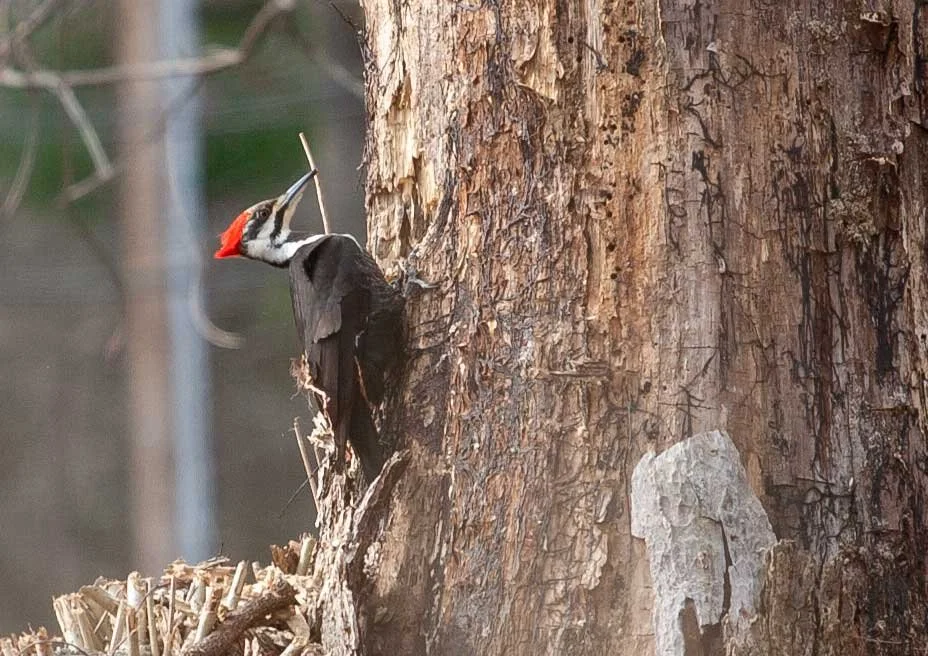The Secret Life of Dead Trees
Dead and fallen trees provide food and shelter for native wildlife, especially birds and insects. The heart shape in this log was literally carved from the life of local fauna. Top photo and photo below: ©2023 Elana Goren.
Ever wonder why park staff and volunteers will cut a dead tree that has fallen across a trail but they leave the fallen tree beside the trail instead of taking it away? Granted, removal requires resources that may not be available to the trail crew, but the main reason dead trees are left alone is that they are integral to the survival of the forest. Taking dead trees away would undercut the ecosystem and threaten the health of the environment where the dead or dying trees have fallen. Dead trees are full of life because they provide nutrients for life, as well as shelter.
Fallen trees aren't the only dead trees that provide food and shelter for the local ecosystem. Standing dead trees, called "snags", are also a crucial part of an environment that sustains life. Birds and other animals use snag cavities for nests and woodpeckers create their cavities by pecking at the dead wood as they eat insects living there.
Snags Help Wildlife
The U.S. Fish and Wildlife Service describes snags as “… a unique structure and potential food source. Ants, beetles and other wood-boring invertebrates that excavate and live within these snags become meals for many birds.”
And dead trees feed more than the local wildlife. As they decompose, they release nutrients into the soil that help the plants around them thrive. This is why it’s important to consider ways to integrate dead trees into your landscape wherever possible.
Perhaps a fallen tree can create new possibilities in the garden. Fallen trees can add a sculptural quality to landscapes that allow for a more natural aesthetic. Tree stumps can be used to support birdbaths or as planter supports. Snags can also become sculptural sentinels in the garden, providing nesting shelter and food for a variety of birds without any investment from you, the gardener. As long as the dead or dying trees are somewhere that they cannot cause property damage if they fall, why not consider leaving snags where they stand?
With all the devastating news about the steep decline of insect and bird populations, we need to do all we can to reverse that alarming trend. Keeping dead trees in place and planting native plants will go a long way to help our native fauna.
Check out the full post about the life of dead trees on the The U.S. Fish and Wildlife Service website. And here's a pdf from WSU on ways to integrate dead trees into your landscape.
NOTE: This is a repost from my blog: https://www.nativefloraforfauna.com/

